Exam season is coming up fast – but before you hit the panic button, have a look at our top revision tips. These 6 study hacks will help you plan your study time, beat procrastination, memorise and get your notes in order. So whatever level of organisation you’re at now, with a couple of these hacks you’ll whip your revision into shape in no time.
Let’s start!
- Make a revision timetable
- Use the Pomodoro technique to manage study time
- Make flashcards to test what you know
- Draw mind maps to see the bigger picture
- Use sticky notes to organise and remember
- Ace note-taking with these 2 simple techniques
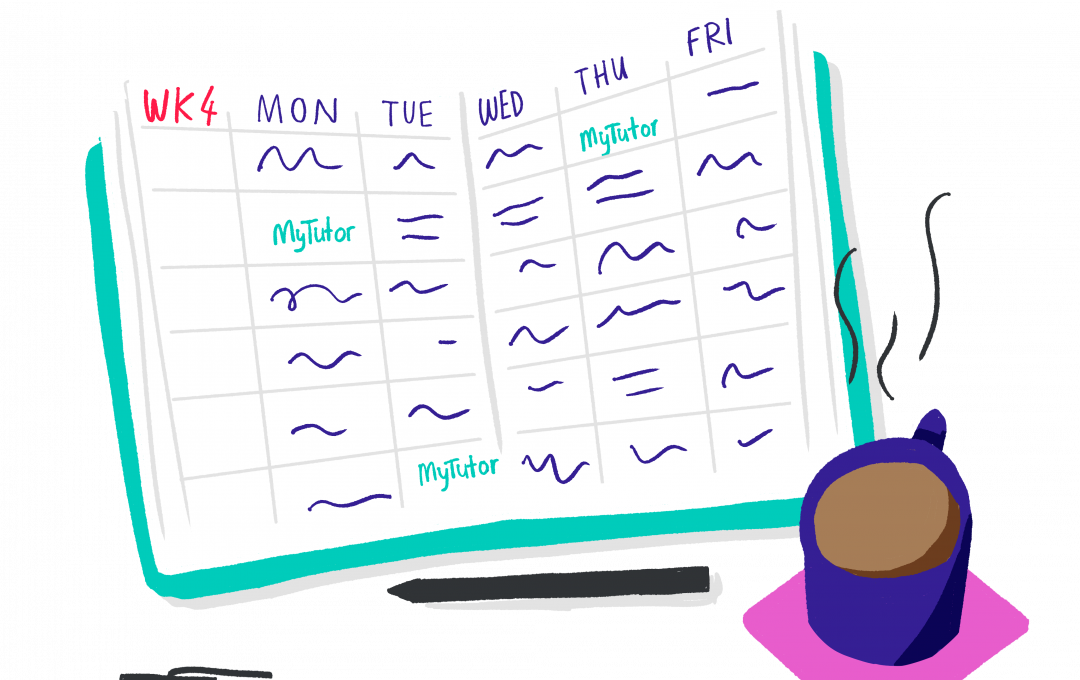

Make a revision timetable
If you haven’t already made a revision timetable, you can put one together now. Just follow these simple steps:
- Use one planner. The first thing you want to do is pick a planner – and stick to it. All things revision-related should go in the same place. Put the timetable somewhere visible like on a cork board in front of your desk. Or if it’s digital, set up notifications to help you remember what and when to revise.
- Mark dates. Jot down all deadlines for projects, tests and exams into your timetable. When you know what’s coming up, it’s a lot easier to plan out the rest of your revision schedule.
- Prioritise. When you’re trying to work out what to do first, think about deadlines. Which projects are coming up? You should also consider how tough you find a subject. So, you might spend less time on English if it’s easy for you, and more time on Biology if it’s a trickier subject.
- Chunking. ‘Exams’ can feel huge. But if you break down your revision for a subject into smaller chunks, it’ll be much easier to tackle the work and to keep track of how you’re doing. Break up your work by using a subject’s topic specifications as a guide.
- Time of day. When you’re scheduling study time into your timetable it’s a good idea to know what time of the day you learn best. Are you a morning person or a night owl? Plan to do the more intense parts of your revising at the time of day when you’re feeling most focused.
- Be kind to yourself. This means taking breaks, drinking water, eating healthy food, exercising and meeting up with friends. Have some go-to calming activities (like playing an upbeat playlist, or taking a bath), and use them when you feel exam stress coming on.
- Check in. Don’t forget the timetable! Check in at least once a day to see what you planned. Set yourself reminders. And if your goals change a bit, be flexible and see how you can rework the timetable to still meet your deadlines.
- Done and dusted. Is there anything more satisfying than ticking off a job done? This is why breaking up your work into smaller chunks is a good idea. You can give yourself a big tick mark as you move through your timetable and feel good about it.
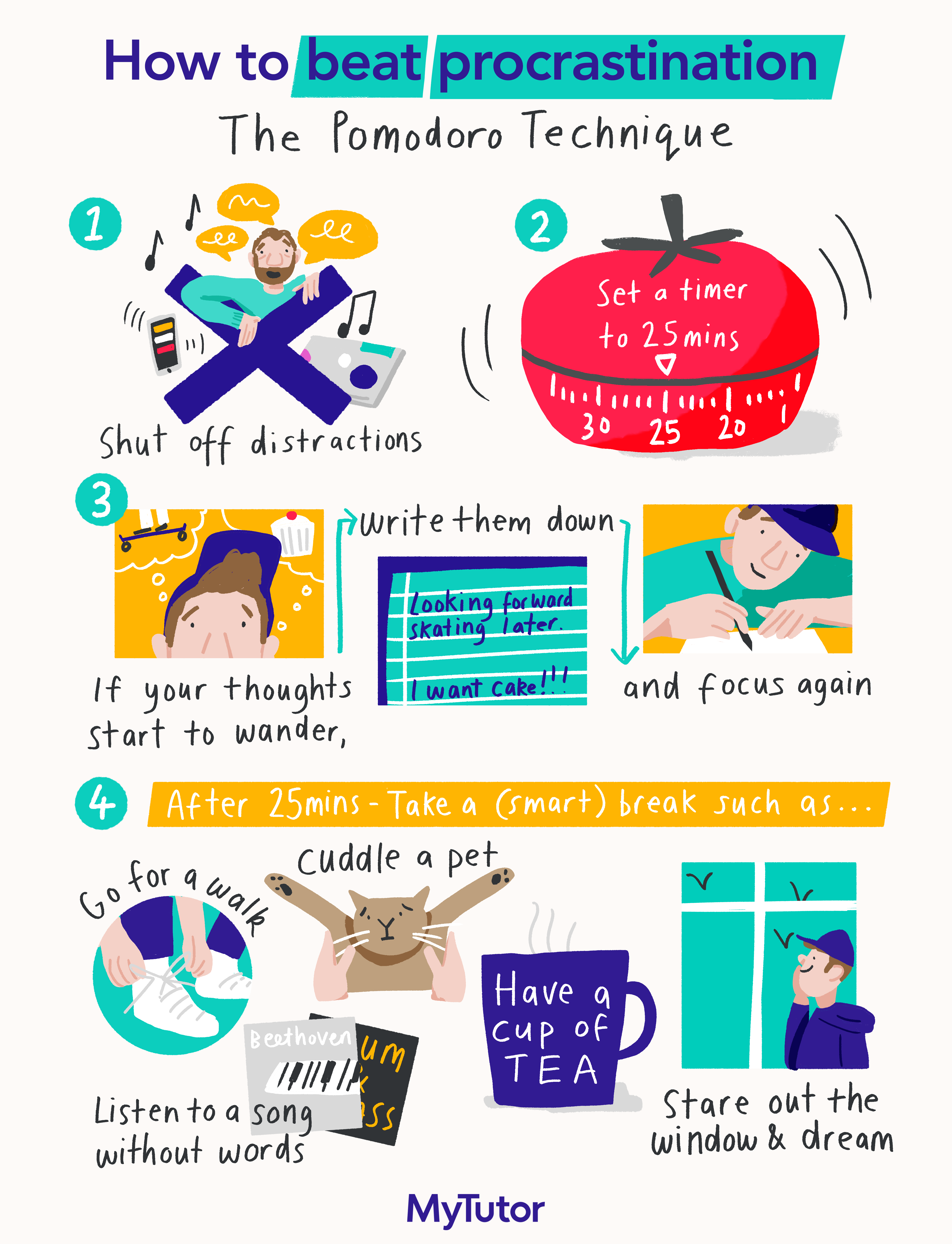

Use the Pomodoro technique to manage study time
When it comes to revising – should you study for hours on end on just one subject? Or should you cover a few subjects on a Saturday afternoon? What’s the best way to use your time? Pomodoro takes all that guesswork out. It’s a way of time managing your revision, and it’s recommended by study experts. Pomodoro helps you break up your study time into doable chunks and gives you short breaks in between. Here’s how it works:
- Step 1. Choose a subject to revise in. For example, GCSE English.
- Step 2. Set the Pomodoro timer (or pomodoro app) for 25 minutes.
- Step 3. Revise the subject by choosing one study activity. For example, you can highlight key words in your notes or read texts from the English course list, or work with flashcards, or create a mind-map, or plan out how you’d answer an exam question from a past paper…
- Step 4. End your work when the timer rings and take a short break (about 5 mins). Stretch, move, get a drink of water, have a snack. Try not to do anything that involves too much focus–really give your brain some down time.
- Step 5. Repeat steps 2-4 for your second Pomodoro. Set aside at least an hour (so 2 Pomodoros) and stick to the same subject in that time. By revising the same subject, you can go deeper into the course specifications.
Tip: Do a different study activity in each Pomodoro round. So if you read 2 poems for your first Pomodoro round, for the second, create mind maps about the themes, characters and settings of those poems.
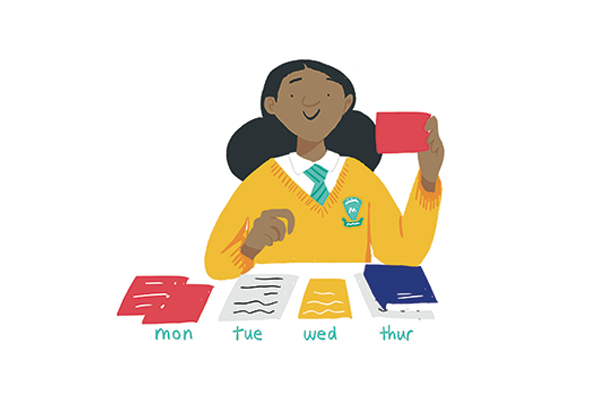

Make flashcards to test what you know
One of the best ways to learn a topic is by testing yourself. Flashcards help you find out what you know, and where you can spend a bit more time revising. For making your flashcards as useful as possible, here are six tips:
- Mix pictures and words. Adding pics, diagrams and visuals in general can help you remember the info better.
- Use one idea on each flashcard. It’s easy to overload your flashcards with information. That makes it harder to go deeper with your learning of a topic. Try breaking up topics into smaller chunks, and focus on one mini topic for each card.
- Say your answers out loud when you study. When you’re testing yourself, saying your answers out loud will help you remember them better because it’s another way your brain takes in the information (by hearing).
- Sort your cards into piles. Make 3 piles as you test yourself so that you know where you need to focus your revision. Sort them into: a) topics you know well b) topics that need a bit more attention, and c) tricky topics
- Practice. Look away. Practice. Look away. It’s important to take breaks between study time. Breaks help you feel fresh again. Plus your brain is still hard at work – yes, even when you’re resting. It’s busy making links between the topics you’ve just covered so that the info sticks better in your memory.
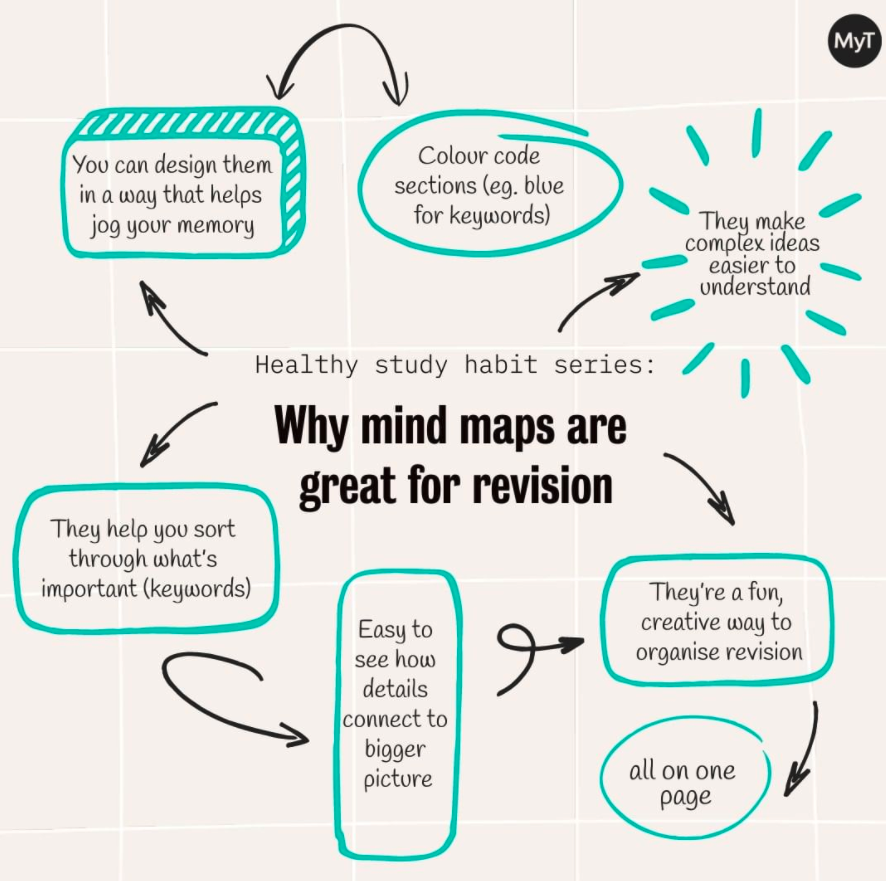

Draw mind maps to see the bigger picture
Mind maps are really useful when you want to see the bigger picture. Here are some benefits of using mind maps for revision – plus tips on how to make the most of them.
- All on one page. Mind maps make it easier for you to see how all the info in a topic connects. Start with a topic specification at the centre, and draw branches out to keywords. Fill in details from there.
- Keywords. Making a mind map helps you sort through what’s important in your topic specifications. Tip: colour code your keywords to help jog your memory later.
- Make them eye-catching. Use symbols, drawings and colours. All of this plus, the branching structure of mind maps make the topics stick better when you later test yourself.
- Test yourself. You can figure out how well you know a topic by only having the central topic specification filled out. It’s up to you to remember keywords, subtopics and other details that branch out from there.
Use sticky notes to organise and remember
You might already use sticky notes to leave yourself reminders about things like homework deadlines. There are lots of ways you can use sticky notes to help you revise too. Here are a few:
- Create to-do lists. Write out mini revision goals on stickies and leave them on your laptop screen or on the wall in front of your desk to remember. Tick off these mini goals as you get them done.
- Get your notes organised. Stickies are a great way to colour code sections of your notes (for example, into key themes).
- Highlight what’s important. You can use the thinner sticky tabs to highlight key sections in your notes and textbooks.
- Sum up long passages. On your stickies, write short summaries of your notes.
- Draw diagrams. If you’re looking over your notes and find inspiration for a pic or diagram that would help you remember better, use a sticky and make it happen.
- You can quiz yourself. Cover up parts of your revision notes with post-its and write what you can remember on it.
Ace note taking with these 2 simple techniques
If your notes are scribbles that don’t tell you much, it might be time to switch up your note-taking technique. Here, we include 2 examples that can help you keep all the important topics organised and clear.
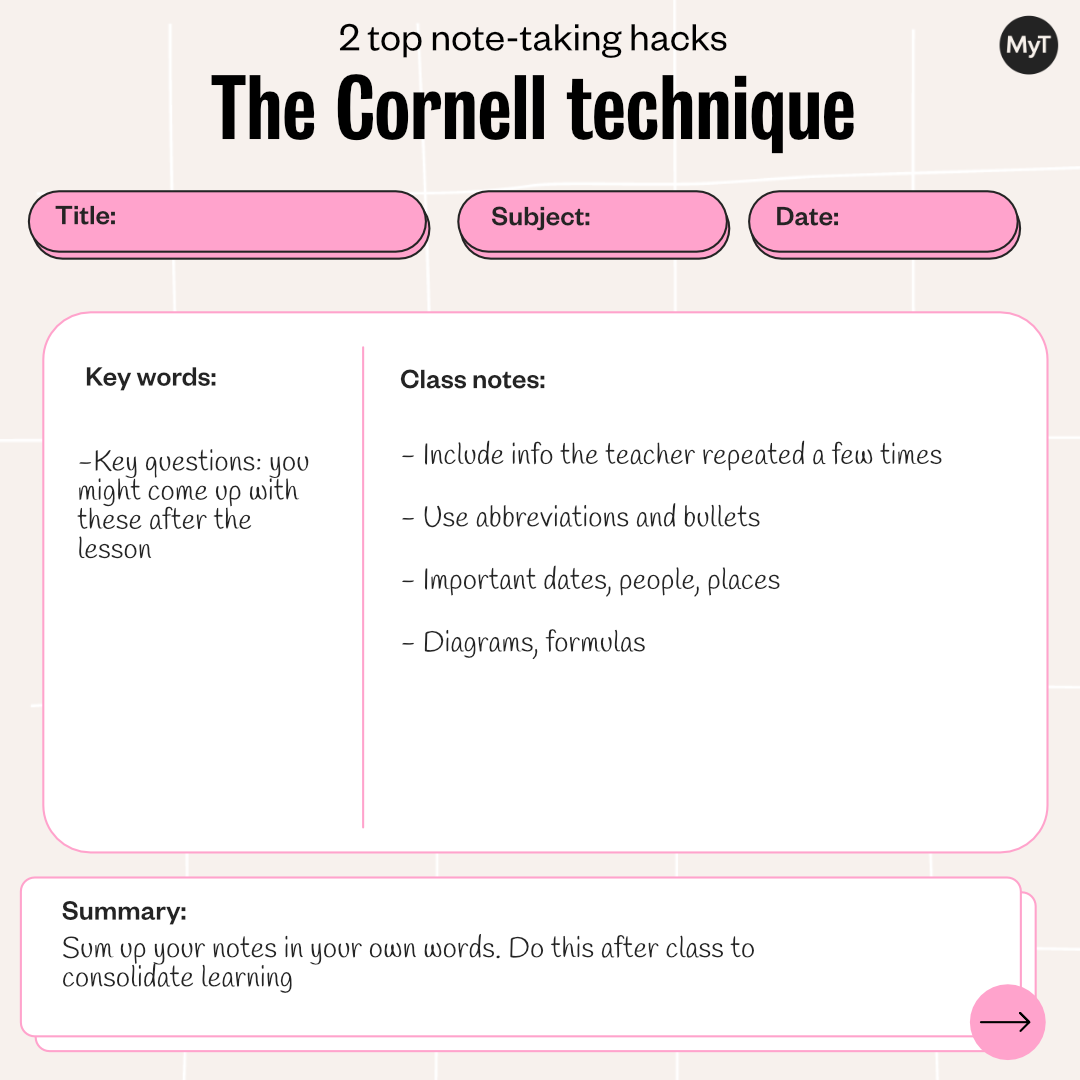

What we love about the Cornell technique: The different sections help you work out what’s important to add in. And the Sum up section is a great way to revise the day’s lesson after class.


What we love about this technique: Like the Cornell technique, the different sections and box structure make it easier for you to organise the info from your lesson. The built-in diagram section is especially helpful for Science subjects.
…And there you have it! Whether you try one or all of these study tools, it’s about finding what works for you. With the right techniques up your sleeve, you can get your revision on track and achieve your best grades this summer.
👩🏫 Get all the A-Level and GCSE exam dates you need for 2024 right here!




